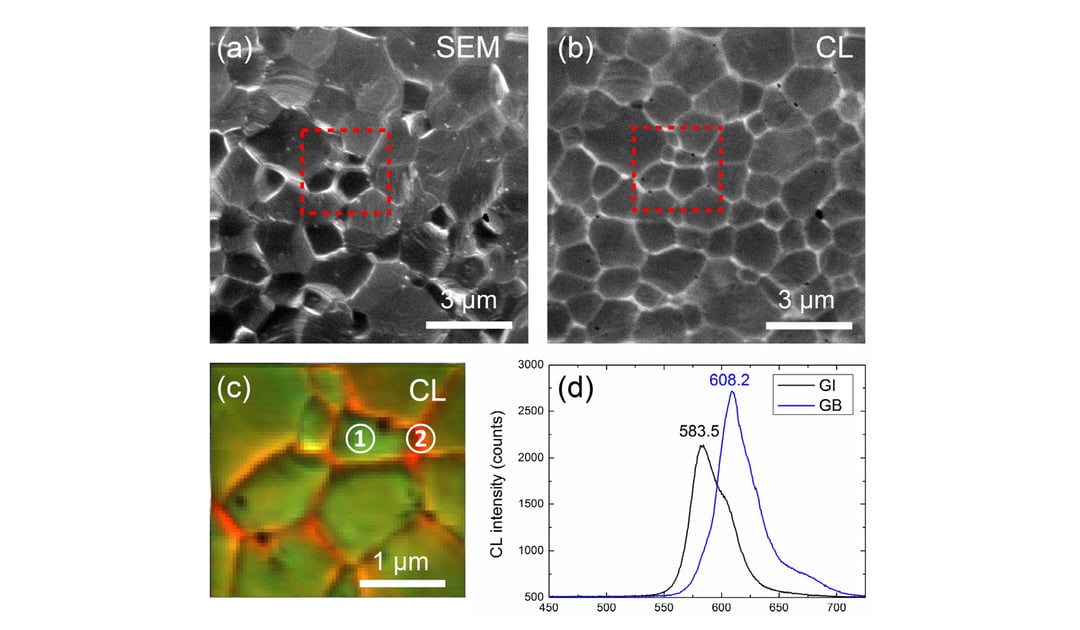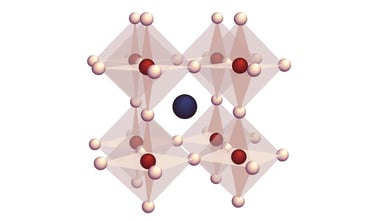This review makes an argument of cathodoluminescence being one of the most powerful characterization techniques for studying optoelectronic properties of halide perovskite solar cells.
In the review the authors recognise the growing potential of halide perovskite solar cells, whose efficiency reached 25.2% and surpassed CdTe and CulnGaSe2. Therefore, a powerful technique is needed for characterization of such perovskite materials, which is capable of revealing how processing affects their structural, chemical and, optoelectronic properties. Cathodoluminescence microscopy is a well-established and common technique used for such analysis, capable of revealing impurity or defect energy levels, dopant concentrations, charge-carrier lifetimes, capture cross-sections, and spatially resolved defect maps.
The paper provides a full explanation of cathodoluminescence in general and discusses cases, issues, CL measurement process and equipment, as well as reviews articles in which CL is used to analyse various types of hybrid perovskite materials. If you would like to read the full review, please access it here.
And if you are interested to learn what results can be obtained when studying perovskite materials with the Delmic cathodoluminescence detection system SPARC Spectral, then check our application notes on Cathodoluminescence imaging on perovskites: phase segregation in inorganic CsPblBr2 and Cathodoluminescence Imaging of Three-Dimensional Methylammonium Lead-Halide Perovskite Structures.
.png)






